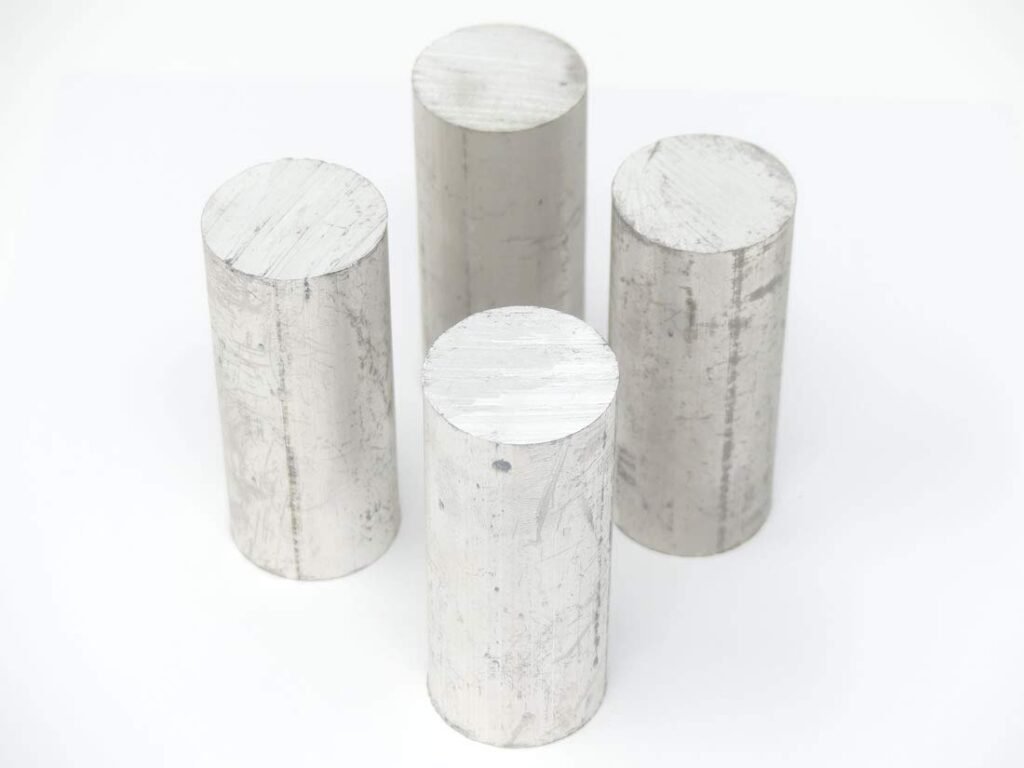What is semi-solid forming process?
Semi-solid forming process including 3 steps
The semi-solid forming process generally includes three steps: preparation of non-dendritic structure, secondary heating and semi-solid forming.
- electromagnetic stirring method
The electromagnetic induction is used to generate an induced current in the solidified molten metal. Under the action of an external magnetic field, the induced current causes the metal solid-liquid slurry to vigorously agitate, transforming the traditional dendritic structure into a non-dendritic structure.
It is generally used to produce bar stock with a diameter of not more than 150mm. This method overcomes the shortcomings of mechanical stirring to a large extent. Which can realize continuous casting, and has high production efficiency. It is currently the most widely used method in industrial production.
- Strain Induced Melt Activation (SIMA)
The alloy ingots with fine grains are continuously cast in advance. And then the alloy ingots are pre-deformed enough, and then heated to a semi-solid state.
During the heating process, pre-deformation occurs first, and then partly melted. So that the primary phase is transformed into particles, forming a semi-solid alloy material.
This method has unique advantages for the preparation of higher melting point non-dendritic structure alloys. But it can only prepare blanks with a diameter of less than 60mm.
- Semi-solid isothermal heat treatment
In the molten state of the alloy, add metamorphic elements, perform conventional casting, and then reheat the ingot to the solid-liquid two-phase zone for insulation treatment (semi-solid isothermal heat treatment).
Finally, a thixotropic non-dendritic structure is obtained. The main process parameters include the type, amount of added trace elements, semi-solid isothermal temperature and holding time, etc.
Chemical grain refinement
It is a new method developed in recent years. By adding a grain refiner or modifier to increase the number of foreign grains or change the crystallization method to refine the grain structure. The produced ingot is suitable for semi-solid casting.
According to reports, Norway’s NorskHydro company has prepared fine-grained ingots of magnesium alloy AZ91 through chemical grain refinement combined with special solidification conditions.
Before semi-solid thixoforming, partial remelting (secondary heating) is required. The blanks with non-dendritic structure should be accurately divided according to the size of the processed parts. And then heated to the semi-solid temperature before forming.
One of the purposes is to obtain the solid phase volume fraction required by different processes. And the other is to gradually grow small dendritic fragments obtained by some processes (electromagnetic stirring, chemical grain refinement, etc.) and transform them into a spherical structure. Create favorable conditions for thixotropy.
The difference between rheology and thixoforming technology is that the former is a process of forming a semi-solid state from a liquid during cooling, and then forming a process; the latter is a process of heating a solid state to a semi-solid state and then entering the forming process.
Compared with rheological casting, thixocasting is easy to realize the heating and conveying automation of blanks. It is the main process method of semi-solid casting at present. However, whether it is rheological or thixotropic, the process flow is relatively long. The casting process cost is relatively high.
Existing problems and prospects
In recent years, the application of magnesium alloys has increased year by year, but some unsolved problems have restricted the extensive production of magnesium alloys. It is manifested in the following aspects: Magnesium has strong chemical activity, is easily oxidized in the air, and can burn at high temperatures.
Therefore, complex protection measures must be adopted during the smelting process. The flux protection method and gas protection method are mainly used in the industry.
The biggest disadvantage of the flux protection method is that the harmful gas generated during the reaction seriously pollutes the environment and harms human health; while the SP6 gas, which is often used in the gas protection law and has a good protective effect, has a greenhouse effect of CO: 24
900 times 12″; Magnesium has poor formability at room temperature. At present, most of the industrial applications are magnesium alloy die castings, which limits the use of other forming methods. Another reason why magnesium alloys are not used on a large scale like aluminum alloys is their poor corrosion resistance. , The use of surface protection increases its production cost.
In view of the above problems, magnesium alloy research has focused on the following aspects: pollution-free smelting technology. Studies have shown that magnesium alloy alloyed flame retardant has a good effect.
Develop and improve the forming process of magnesium alloys; further study the surface treatment technology of magnesium alloys, improve their appearance and corrosion resistance, and research on high strength and toughness magnesium alloys and heat-resistant magnesium alloys.

